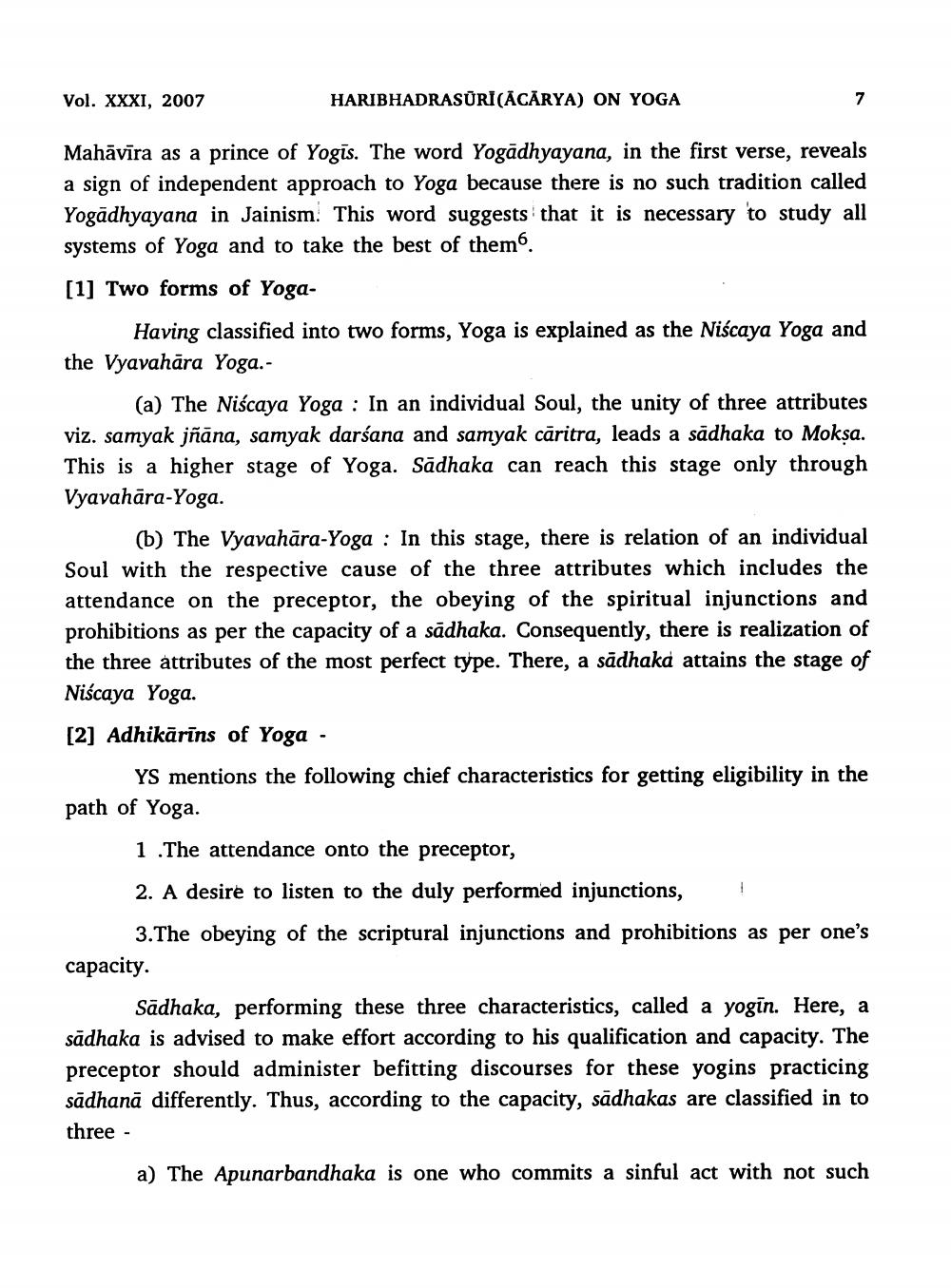________________
Vol. XXXI, 2007
HARIBHADRASŪRĪCĀCĀRYA) ON YOGA
Mahāvīra as a prince of Yogīs. The word Yogādhyayana, in the first verse, reveals a sign of independent approach to Yoga because there is no such tradition called Yogādhyayana in Jainism. This word suggests that it is necessary to study all systems of Yoga and to take the best of them. [1] Two forms of Yoga
Having classified into two forms, Yoga is explained as the Niscaya Yoga and the Vyavahāra Yoga.
(a) The Niścaya Yoga : In an individual Soul, the unity of three attributes viz. samyak jñāna, samyak darśana and samyak caritra, leads a sadhaka to Moksa. This is a higher stage of Yoga. Sādhaka can reach this stage only through Vyavahāra-Yoga.
(b) The Vyavahāra-Yoga : In this stage, there is relation of an individual Soul with the respective cause of the three attributes which includes the attendance on the preceptor, the obeying of the spiritual injunctions and prohibitions as per the capacity of a sādhaka. Consequently, there is realization of the three attributes of the most perfect type. There, a sādhaka attains the stage of Niścaya Yoga. [2] Adhikārīns of Yoga -
YS mentions the following chief characteristics for getting eligibility in the path of Yoga.
1 .The attendance onto the preceptor,
2. A desire to listen to the duly performed injunctions,
3.The obeying of the scriptural injunctions and prohibitions as per one's capacity.
Sadhaka, performing these three characteristics, called a yogin. Here, a sādhaka is advised to make effort according to his qualification and capacity. The preceptor should administer befitting discourses for these yogins practicing sādhanā differently. Thus, according to the capacity, sādhakas are classified in to three
a) The Apunarbandhaka is one who commits a sinful act with not such




